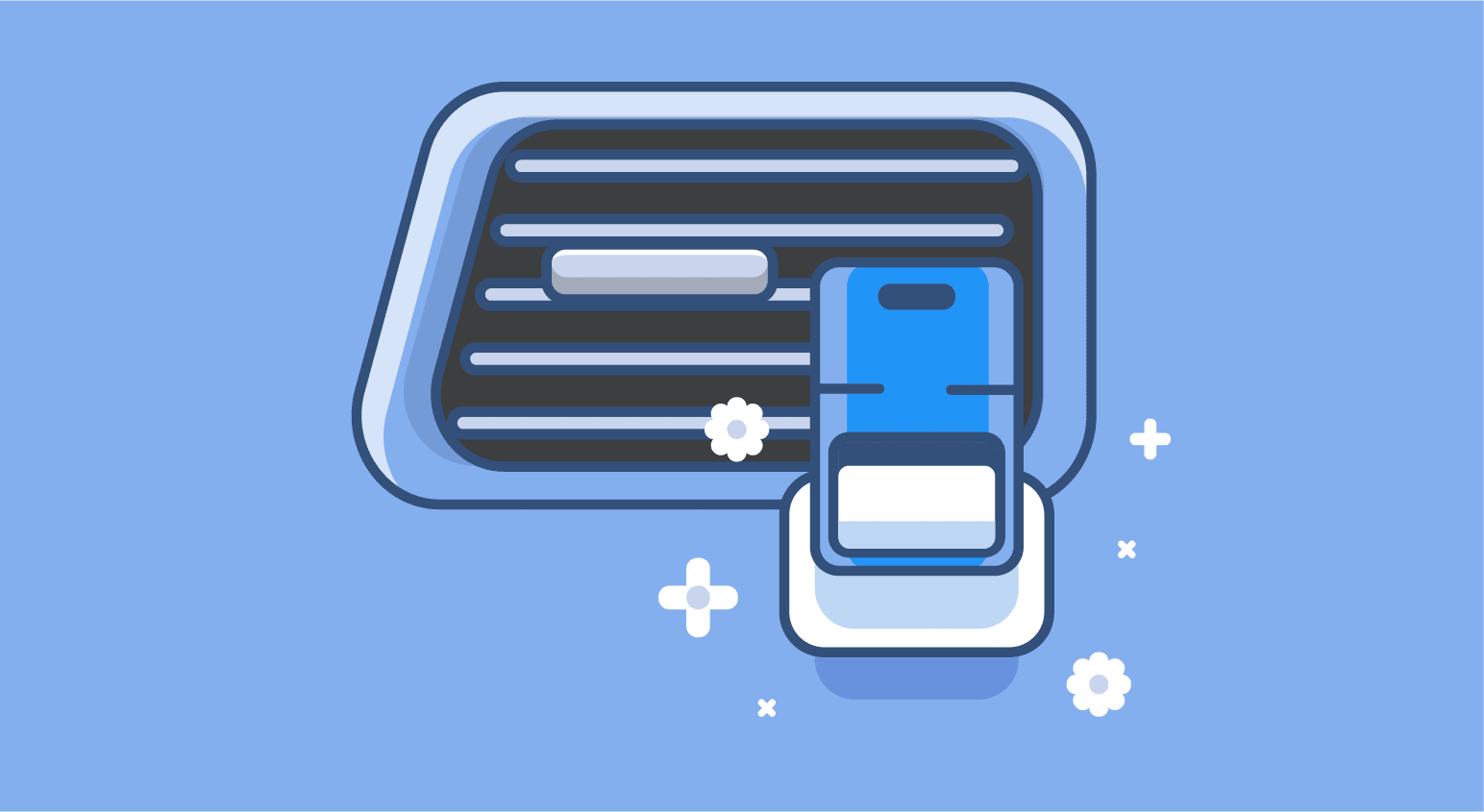We will describe the risks of mold exposure and the importance of preventing mold growth, while also providing a step-by-step guide on how to remove mold from your car. If you’re unlucky enough to already have developed this major problem, don’t worry!
While it may seem like an insurmountable challenge, in fact with the right supplies and with some elbow grease you can restore your car to the safe, clean, comfortable vehicle you deserve.
I. What is mold, and Why is it Dangerous?
Mold is a type of fungus that typically forms in the presence of higher temperatures and high levels of moisture. Exposure to mold can cause major health issues, especially in those who are sensitive to it.
Those who are most susceptible to the effects of mold include those with lung diseases, allergy sufferers, and those with compromised immune systems (e.g. those receiving treatment for cancer, who have had an organ transplant, or who are taking immunosuppressive medications).
The presence of mold can lead to respiratory and skin irritation, lung infections, asthma, and other health challenges. Symptoms can include nasal congestion, wheezing, eye and skin irritation, fever, and shortness of breath. That’s why it’s extremely important to avoid exposing yourself to mold, especially somewhere you’re likely to spend as much time as your car. (And to make sure you never leave your car out in the open if the top is down!)

Luckily, if you notice mold—typically noticeable due to a strong odor, but also potentially visible patches of mold—there are steps you can take to fix the problem. Keep reading to learn how to protect yourself from mold in your automobile.
II. How to Remove Mold
There are, of course, numerous methods to eradicate mold from your car, and everyone will recommend something different. But here’s what we think is the best way to do it.
1. Protect yourself

Always make SURE that you are wearing a surgical face mask or particle mask as well as strong, non-porous household cleaning gloves (make sure they’re solid enough not to break). This will decrease the likelihood of harmful, excessive exposure to mold and its possible toxins.
2. Air out your car in a sunny spot
Sunlight and fresh air are pretty powerful tools in the fight against mold. Like virtually all types of fungi, mold grows in moist areas, so the combination of sun and fresh air dries things out and makes it impossible for mold to survive.
Ideally, on a clear day, move your car to a sunny parking spot and open up the doors and windows (and sunroof, if there is one). Give it a few hours and let any dampness dry out. (Just be sure to keep an eye on the weather—you’ll be giving yourself even more of a problem if a sudden shower appears and your car’s interior is exposed to the elements!)
3. Inspect your car
It’s a good idea to look all throughout your car to get a sense of where the mold is an issue, so you can focus on particular areas in the later steps. Make sure to look at the following: surface of the seats, underneath seats, steering wheel, floor, seat belts, and seat side seams.
Mold can vary in color, so just look for (typically circular) areas of black, green, white, gray, or brown. That’s how you’ll know where you need to focus your cleaning efforts.
4. Prepare before disinfecting

Try to break up patches of mold by gently brushing them with a toothbrush. Then, if you’re lucky enough to have access to one, use a wet-dry vacuum cleaner to vacuum up the mold you’ve just brushed up. (If you can’t get your hands on a wet-dry vacuum, that’s OK—this step is helpful but not essential).
5. Spray with disinfectant solutions
Take out your car’s seat covers and carpets. Before you wash them, you can use any of the following mixtures to kill mold in these sections of fabric:
- 4 parts white vinegar and 1 part water
- 1 quart of water, ½ cup of white vinegar, ¼ teaspoon of clove oil, and 1 tbsp of baking soda (note: avoid exposing skin directly to clove oil—it can cause dermatitis and irritate skin and mucous membranes)
Pour either of these mixtures into a spray bottle and spray it on your car’s seat covers and carpets. They should sit on the material for at least 20 minutes—or even longer—in order to ensure that the potent ingredients are able to fully kill the mold and prevent its regrowth.
You may also want to spray other parts of your car where mold has been able to infiltrate and cause odor (including as the dashboard, air vent, steering wheel, and seats).
Stains on the seats, seat covers, and carpets can be removed by sprinkling good old Borax powder on them (yes, it’s useful for so many purposes!), waiting at least 10 minutes, and then sweeping or vacuuming the powder away.
6. Remove the leftover residue
Once the mold has been killed, you can use a wet-dry vacuum to vacuum up the liquid solution. Otherwise, you can wait for the areas to dry and then use a regular vacuum to vacuum up the dried-up mold residue. If you use a regular vacuum, make sure you use one with a bag and then throw the bag away afterward. Otherwise, you’ll be spreading mold spores when you bring it inside to clean your home.
7. Wash your car’s seat covers and carpets

Now that you’ve thoroughly disinfected them, you can use standard detergent to wash your car’s seat covers and carpets. If possible, add Borax powder when you wash them and allow them to dry in the sun if it’s a sunny day (as we said, the sun is incredibly helpful for this process).
If for whatever reason you can’t wash them with detergent, an alternative is to spray them thoroughly (really all over, so that the mold spores are killed) with a solution of water and non-iodized salt. Then allow them to dry in the sun, and wait for the salt to form a crust on the surface, which you can brush or vacuum off.
Salt does a great job getting rid of mold—it dries it out thoroughly and kills it.
8. Optional: use an air freshener spray to remove leftover odors
If you’re bothered by the residual smell of vinegar (which will disappear as the liquid completely evaporates), you can use an air freshener spray to ensure everything smells fine.
Most important is to air everything out—that’s what will leave everything smelling good.
9. Replace the seat covers and carpets, and keep the mold from coming back
Once you’ve washed and dried the seat covers and carpets, it’s time to put them back in your car.
And here’s a key takeaway: since mold requires a wet environment to grow, you can prevent its return by ensuring your car is dry and that it remains totally dry. This is the most important part of preventing mold re-growth.
You can use a dehumidifier to lower the overall moisture levels in your car.
III. Best Car Air Fresheners

If, after cleaning, you decide you’d like to use an air freshener to ensure your car smells absolutely perfect, here are some of the best commercial products to use:
1. Moso Natural Air Purifying Bag
Here’s one all natural option—a linen bag full of pure bamboo charcoal! Activated charcoal is amazing for absorbing moisture and odor. In order to keep it functioning, all you have to do is leave it in the sun to dry (with all the moisture having been absorbed).
It lasts for two years, and then you can open up the bag and use the charcoal as fertilizer for plants. So it’s eco-friendly from start to finish, and won’t expose you to any toxic chemicals whatsoever.
2. Turtle Wax 50819 Power Out! Odor-X Kinetic Whole Car Blast
This is a high-powered canister deodorizer that “seeks and destroys odors at the molecular level”—and does so for up to a month. It can be used underneath seats, on the inside of air vents, and in carpet fibers.
It’s also a pretty great value.
Customer reviews report it’s incredibly effective and easy to use. Note that the initial smell of the product is strong, but the chemical smell will dissipate over time leaving no odor in its wake.
3. Ozium Smoke and Odor Eliminator Gel
This is a gel deodorizer that’s not designated specifically for cars, but also for home and office. It comes with a twist top that allows you to choose the level of odor control.
The product itself has a slight citrusy odor but nothing too strong. It’s a solid product that’s easy to use and very affordable.
4. Chemical Guys New Car Smell Premium Air Freshener and Odor Eliminator
Love the smell of a new car?
This product is engineered not only to eliminate odor from your vehicle but also to add that amazing new car smell (thankfully without the associated toxic chemicals that are part of the real new car smell).
It’s also so concentrated that it can be diluted with distilled water and still work.
And amazingly, all you need for your entire car is one spray.
5. Meguiar’s G2316 Odor Eliminator
Here’s another super-effective spray that gets high customer ratings. It’s a great choice for cars and trucks as well as in the home.
The effects are immediate with a spray as opposed to a gel (which works more gradually over time). That means use of this spray means pretty much instant odor elimination.
Nothing fancy, no frills—just a really effective product for odor removal.
Now you know that as worrisome or even scary as the prospect of a mold-infested vehicle can be, there are options to address the problem. All it takes is some time and effort, with attention to safety (wear a mask and gloves!) and your vehicle can be good as new.
You can even use natural products like vinegar and clove oil solutions to do the work for you, if that’s a priority. And once you’re done, of course, it’s important to keep your car dry, so that you don’t have to go through the trouble of cleaning out the mold again in the future.







